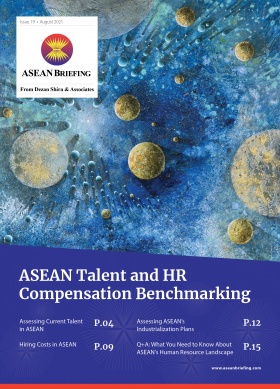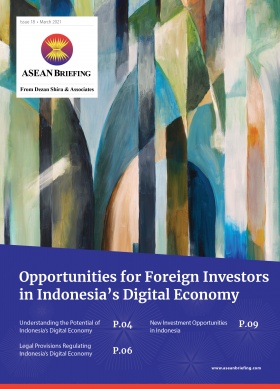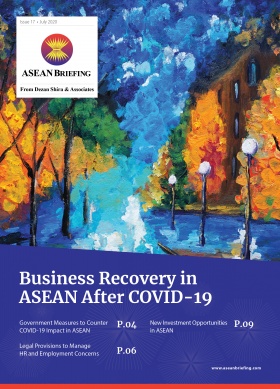How COVID-19 Has Impacted Philippine Medical Worker Recruitment
The COVID-19 pandemic has transformed how medical workers from the Philippines are working, both at home and abroad.
The Philippines is one of the world’s biggest suppliers of nurses deployed to work overseas. In 2019, before the pandemic, about 17,000 nurses from the Philippines left the country to work abroad. In total, over 193,000 nurses educated in the Philippines work abroad, representing 85 percent of all nurses trained in the country.
The pandemic, however, has thrown medical worker migration patterns into disarray. Though the pandemic created unprecedented global demand for medical workers, the crisis at home led the Philippine government to tighten restrictions on the labor movement.In this evolving environment, healthcare institutions seeking to recruit Philippine medical workers need to take stock of current restrictions and consider alternative markets in ASEAN to source labor.
Growing international demand for medical workers
Global demand for medical workers from the Philippines pre-exists the pandemic but has become more urgent since the virus struck, putting enormous strain on healthcare systems. In early 2021, for example, Germany requested the deployment of 15,000 medical workers from the Philippines, while a study published in 2020 suggested that the UK will likely require over 50,000 additional nurses over the next four years.
The Philippines’ strength in developing medical workers stems from the country’s quality education in the healthcare sector, where programs are often taught at least partly in English with an eye towards the international market. Qualifying to work abroad, however, is a long and often expensive process, with nurses generally requiring between five and 10 years to get certified.
Prior to the pandemic, the government actively encouraged healthcare workers to go abroad, because many of them remit significant portions of their salaries back to families in the Philippines. In 2020, cash remittances from about 10 million overseas Philippine workers totaled US$30 billion, representing close to 10 percent of the country’s GDP. This is despite more than 400,000 Filipino workers being repatriated due to the pandemic.
Despite the Philippines’ history of deploying medical workers abroad, in April 2020, the Philippine government barred nurses from working overseas because of the healthcare emergency at home. The government later lifted the ban in November 2020 but set a limit of just 5,000 healthcare professionals allowed to leave per year.
Controversially, the Philippine Department of Labor and Employment said it would be willing to exempt countries from the 5,000-person healthcare limit in exchange for COVID-19 vaccine donations. Although the government has signaled its willingness to be flexible with its restrictions on medical worker movements, the 5,000-person limit remains in place.
The need for medical services in the Philippines
One reason that so many medical workers from the Philippines work abroad is that, despite their high levels of skills and training, work conditions at home are poor. According to the Nursing Act of 2002, nurses’ minimum base pay should come in at “grade 15”, meaning about PHP 33,575 (US$662) per month. In practice, however, junior nurses at public hospitals earn a salary at “grade 11” – PHP 21,000 (US$414) per month – due to underfunding.
Already dire working conditions have also deteriorated amid the pandemic. For example, some nurses have reported needing to buy their own personal protective equipment (PPE). Although the Philippine government said it would pay healthcare workers an additional PHP 500 (US$10) per day of work during the pandemic, close to 17,000 workers had not received this pay eight months later.
In addition to being underpaid, many medical workers are overworked. In the Philippines, there is approximately one nurse for every 5,000 residents, but this can be as low as one for every 20,000 in rural areas. Further, a national study published in 2018 found that as many as 75 percent of local government units lack health workers. Due to this shortage, medical workers are often overworked and face high levels of stress, and are at risk of making more medical mistakes.
With low pay and hazardous working conditions, the Private Hospitals Association of the Philippines estimates that about 40 percent of private hospital nurses quit in 2020. These trends stand to worsen ASEAN’s shortfall of doctors and nurses, which already stood at 700,000 before the pandemic.
Due to the structural deficiencies of the Philippine healthcare system, there will likely be a strong impetus for medical workers to seek overseas work once the government lifts emergency restrictions. Healthcare institutions sourcing medical workers from the Philippines therefore may consider these disruptions temporary rather than permanent.
Identifying alternatives in ASEAN
Although restrictions on the movement of Philippine medical workers may be temporary, healthcare providers worldwide face dire staffing shortages. Accordingly, healthcare institutions and recruitment agencies may need to seek alternatives to find talent elsewhere in the region.
Indeed, while the Philippines stands out for the quality of its medical workers, other countries in Southeast Asia are also competitive. In the UK, the Philippines is the third most represented nationality in the NHS, with over 25,000 workers, while Malaysia is 16th, with 2,581. Malaysia does not have the size of the Philippines population, but medical workers from the country tend to be well trained.
Moreover, Indonesia is a significant and rapidly growing source of caregivers. Though Indonesia does not send as many highly trained medical workers, caregivers are the second largest category of migrant workers from the country, with over 51,000 overseas requests for them in 2018 to perform jobs such as elder care and long-term care. Indonesia’s large population, combined with growing investments in education, stands to make it a robust provider of medical workers in the long term.
The size and maturity of the Philippines’ medical worker labor market make it impossible to replace single-handedly. Nevertheless, emergency restrictions offer an impetus to explore alternative ASEAN labor markets with the potential to become strong suppliers of medical workers.
About Us
ASEAN Briefing is produced by Dezan Shira & Associates. The firm assists foreign investors throughout Asia and maintains offices throughout ASEAN, including in Singapore, Hanoi, Ho Chi Minh City, and Da Nang in Vietnam, Munich, and Esen in Germany, Boston, and Salt Lake City in the United States, Milan, Conegliano, and Udine in Italy, in addition to Jakarta, and Batam in Indonesia. We also have partner firms in Malaysia, Bangladesh, the Philippines, and Thailand as well as our practices in China and India. Please contact us at asia@dezshira.com or visit our website at www.dezshira.com.








